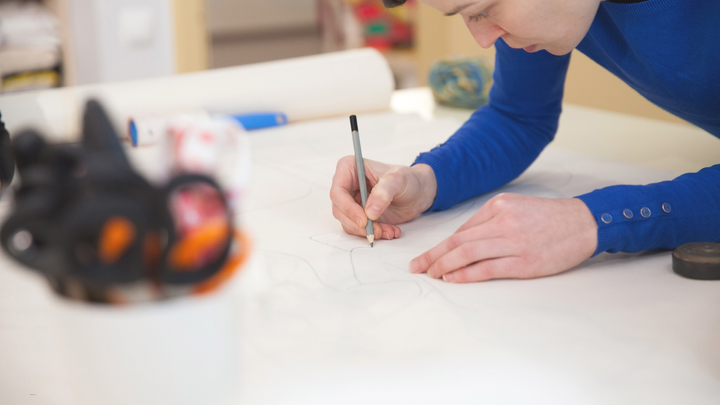7 Ways to Retain Good, High- Performing Employees
Good employees want to be challenged and feel connected to the organization. Align your company's culture with their intrinsic motivation for success and satisfaction. Create an environment that embraces creativity, collaboration, and risk-taking for a more engaged and motivated workforce.

Originally published here
It’s about aligning organizational culture to their intrinsic motivation
Many businesses are struggling to hold on to their good employees. It is difficult to find people who want to work hard and give their all, and you try your best to keep them happy. But, what if you’re looking at the problem wrong? What if it’s not about doing what you can to hold on to those employees, but perhaps it’s about focusing more on creating an environment where good employees thrive and stay?
First, let’s talk about all the good qualities that companies generally look for. The best employees are well-rounded in all twelve traits.
- - Trustworthy
- - Responsible/Reliable
- - Hard-working
- - Team player
- - Good Values
- - Good Communication Skills
- - Good Multi-tasker
- - Empathetic/Sympathetic
- - Good at Planning Ahead
- - Good Organized Skills — Open to new ideas and change
- - Resourceful
- - Good at handling pressure
You see these traits or qualities on job ads all the time. Obviously, finding this unicorn who ticks all the boxes and possess all the required technical skills might be unrealistic, and depending on the role, certain traits might be more important than others.
Let’s say you have a group of high-performing employees and play an integral part in your company’s overall strategy and goals. Realistically speaking, they should be in high demand from your competitors. You can offer higher salaries, development and training opportunities, etc., but your competitors can also match that. So, how do you keep them from leaving?
It’s not about what you can do to them; it’s about how you make them feel.
Creating an environment where good employees thrive and stay is all about the culture that you create. It goes back to those twelve qualities that I listed above. If your company focuses on cultivating a culture that nurtures these traits, you will see a decrease in employee turnover.
Good employees want to work for a company where they can feel like they are making a difference and their efforts are recognized. They want to be surrounded by people who share the same values and share the same goals.
Here are 7 ways companies can create a work environment where your good employees can thrive and stay.
1. Leaders must set a good example for their teams by modeling the conduct they desire to see
It starts from the top. Good leaders know that their behavior sets the tone for everything else. Good employees will follow an empathetic leader and open to feedback, but they won’t be able to do this if leaders in your company have bad habits.
Bad behaviors from managers can create an environment where good employees either disengage or leave because they feel like there’s no way to succeed, which is self-fulfilling. Good employees can spot a fake or disingenuous boss from miles away.
Employees want their leaders to be transparent, approachable, and empathetic; they don’t care about fancy titles or corner offices if that leader isn’t someone who demonstrates those qualities on a day-to-day basis.
If you want to keep your good employees, start by looking at the culture that you’ve created and ask yourself if it’s one where they would thrive and stay. Leaders must model the behavior they want to see in their team; it all starts from the top down. Remember the saying, “people leave their manager, not their company.”
2. Encourage employees to give and receive feedback
When employees and leaders are open to receiving feedback, it creates an environment where good employees can grow and thrive. Good leaders know that their job is to help their team succeed by investing in them and giving them the tools they need to be successful.
Good managers encourage everyone on their teams to give each other constructive criticism when needed because this ensures growth for everyone involved. Good employees want to know that they are on the right track and recognized for their efforts.
When employees feel like they can give and receive feedback without judgment, it builds trust, which is key for any successful organization.
3. Celebrate successes together
It is important to recognize and celebrate successes, big or small. Good employees want to know that they work for a company that invests in them. They also want their efforts to be recognized because it helps build morale within the team, which every organization should strive for.
When leaders recognize employee contributions across teams, not just on a project level but an individual one, it makes them feel like they are part of a bigger picture. Good employees want to know that their efforts will be recognized and appreciated even if it doesn’t mean a promotion or a raise; these sentiments go much further than any dollar amount ever could.
4. Let people work from wherever they feel most productive
The great experiment of this pandemic has been the effectiveness of remote working. Generally, it’s been accepted that most of us do not need to be in the office to be productive.
The truth is, not everyone works best in an office setting. Some people are more productive when they can work from home or a coffee shop. Good employees want to work from wherever they feel most productive because it allows them to do their best work.
Making your employees come back to the office for meetings or one-on-ones can be a pain because it means they have to leave their most productive spaces. Good employees will recognize that you are making an effort to accommodate them, and this will positively impact how they work in the future, which is good for everyone involved.
Most of the employees are attracted to flexibility. As soon as the flexibility is taken away, they will start looking for other opportunities.
5. Embrace change
Most organizations are in constant change. Good employees thrive in an environment that is constantly changing. They can adapt quickly and always look for new opportunities to learn and grow.
Leaders need to embrace change because it helps keep the team on their toes. Good employees want to know that they’re working for an innovative company and are willing to take risks.
Having a clear communication of the strategic road map and the vision would guide the employees to embrace the change.
6. Encourage creativity in all employees by fostering an environment of innovation and experimentation
Let’s acknowledge that some prefer to do the exact same tasks exactly the same way every day. Some would prefer that they can be creative and experiment with potentially innovative ways to develop new products, services, and processes. When you can create an environment where creativity is encouraged, you have created an environment where good employees thrive and stay.
In this environment, employees are not only being creative in their projects but also when it comes to finding ways to improve the processes that they use every day. Good employees want to know that they can take risks because there is no fear of failure, which means growth for both employees and organizations.
Everyone should be encouraged to take risks and think outside the box because it takes employees out of their comfort zone, where they can truly thrive. Good employees are always striving for more, so make sure you give them an environment that encourages this type of growth.
7. Build relationships between coworkers to foster a collaborative environment
I have always believed that there is no long-term benefit to “healthy competition” between individuals and teams within an organization. Good employees tend to build relationships that foster collaboration and teamwork, which is great for everyone because it creates a culture of support.
When you create an environment where good employees are encouraged to collaborate with their peers on projects, they feel more connected to the organization as a whole — which means higher retention rates. Good employees know that they’ll quickly become bored and look for other opportunities if they’re not being challenged.
Collaboration is important because it creates a sense of community within teams and across the organization, leading to better ideas that will ultimately help grow your business. Good employees know this type of collaboration can benefit everyone involved, so they’re willing to participate in anything related to the company that will lead to its success.
As you might have guessed, aligning an organization’s culture to good employees’ intrinsic motivation is key to retaining good employees. Good employees are aware that their motivation will drive them towards a successful career, and they’ll put in the extra effort to ensure this. Good employees thrive with room for creativity, collaboration, risk-taking, and innovative thinking.
Good employee retention ultimately comes from creating work cultures where good employees feel intrinsically motivated because of all the previously mentioned factors. Leaders in any organization should aim for a changeable environment that embraces creativity, collaboration, and risk-taking to keep their good employees satisfied and engaged.



Comments ()